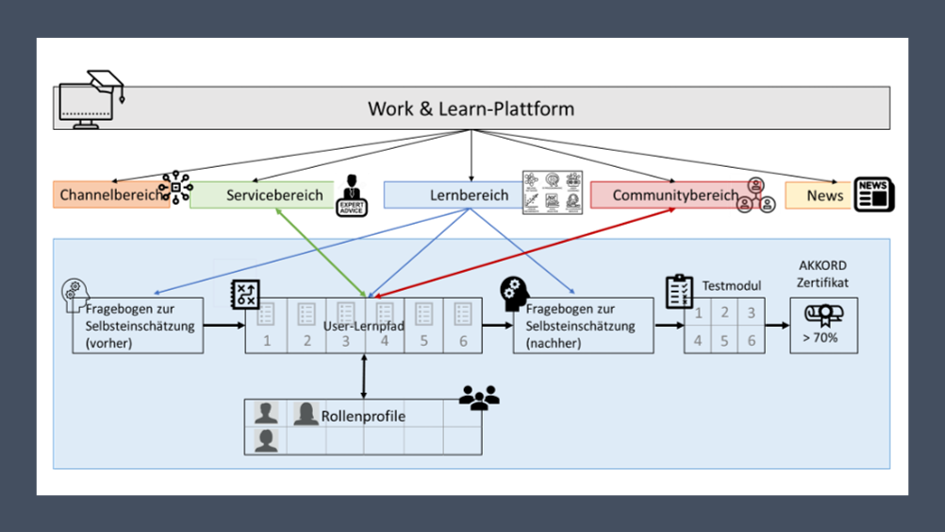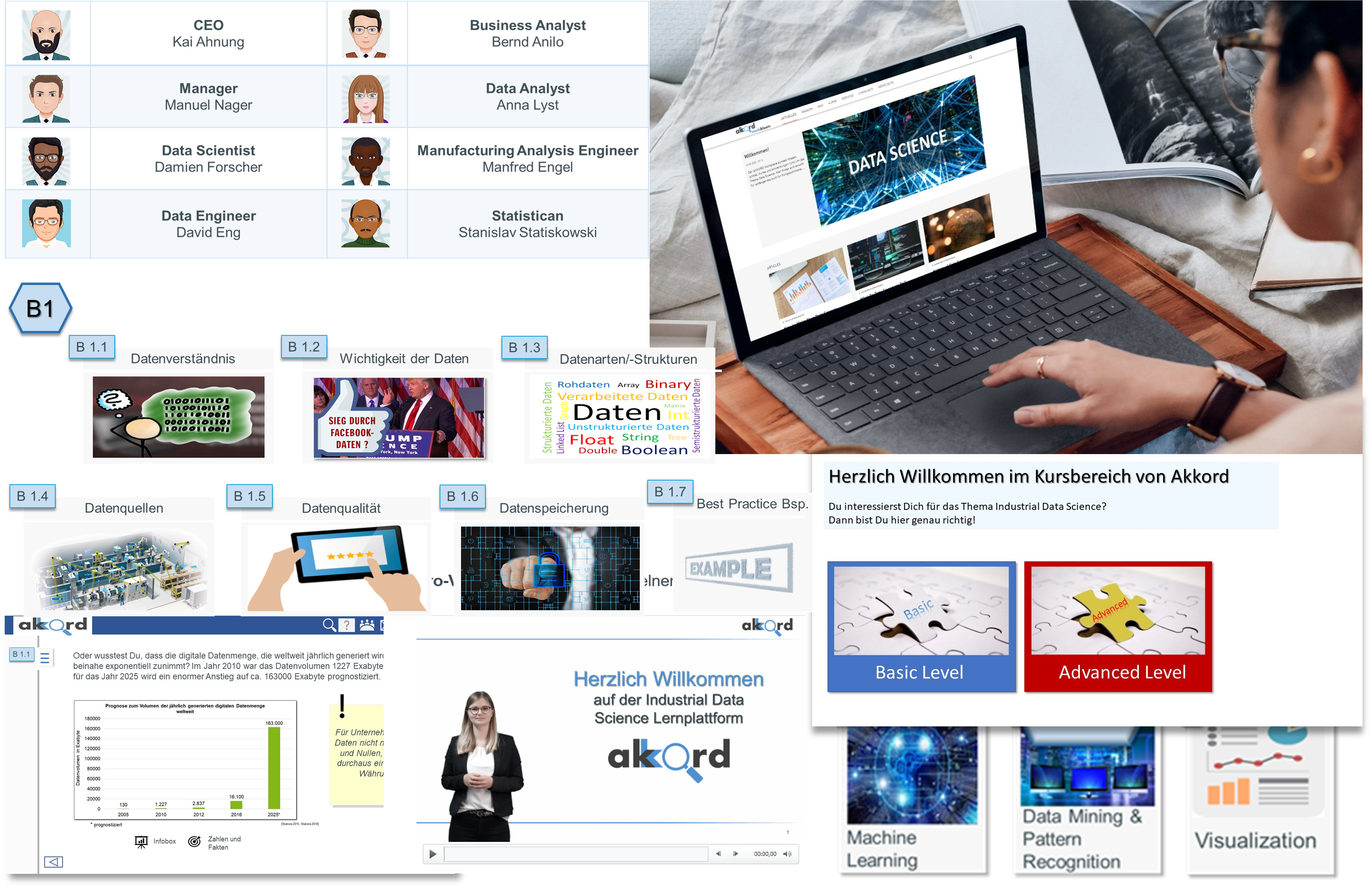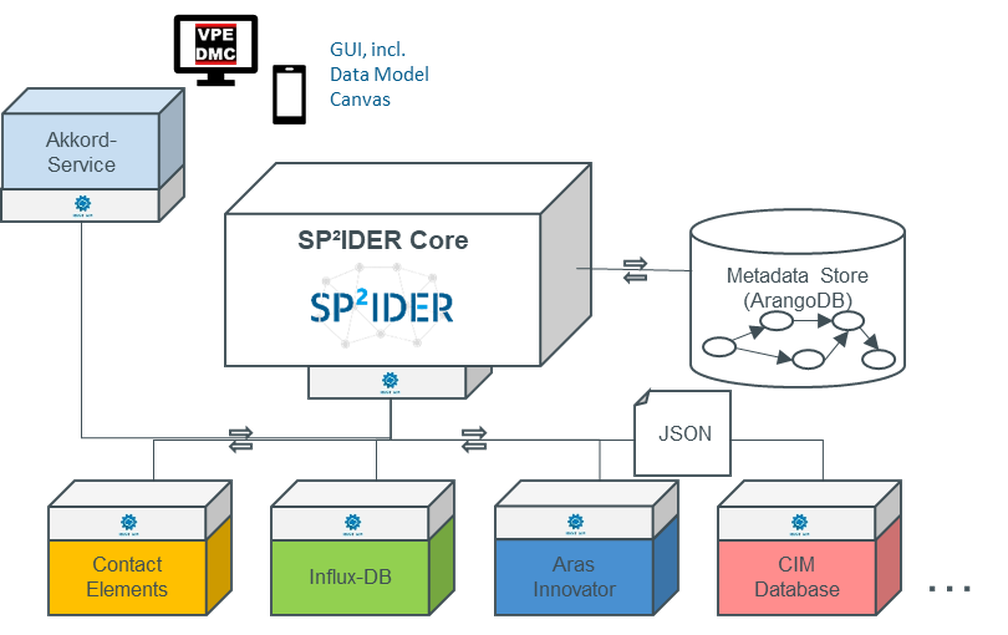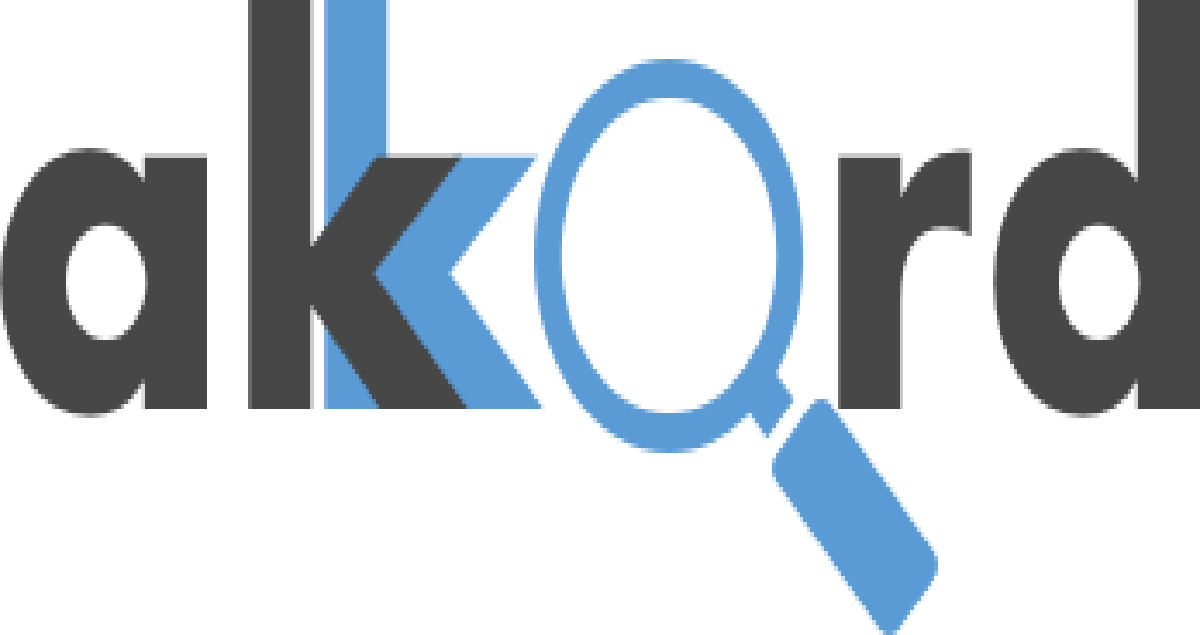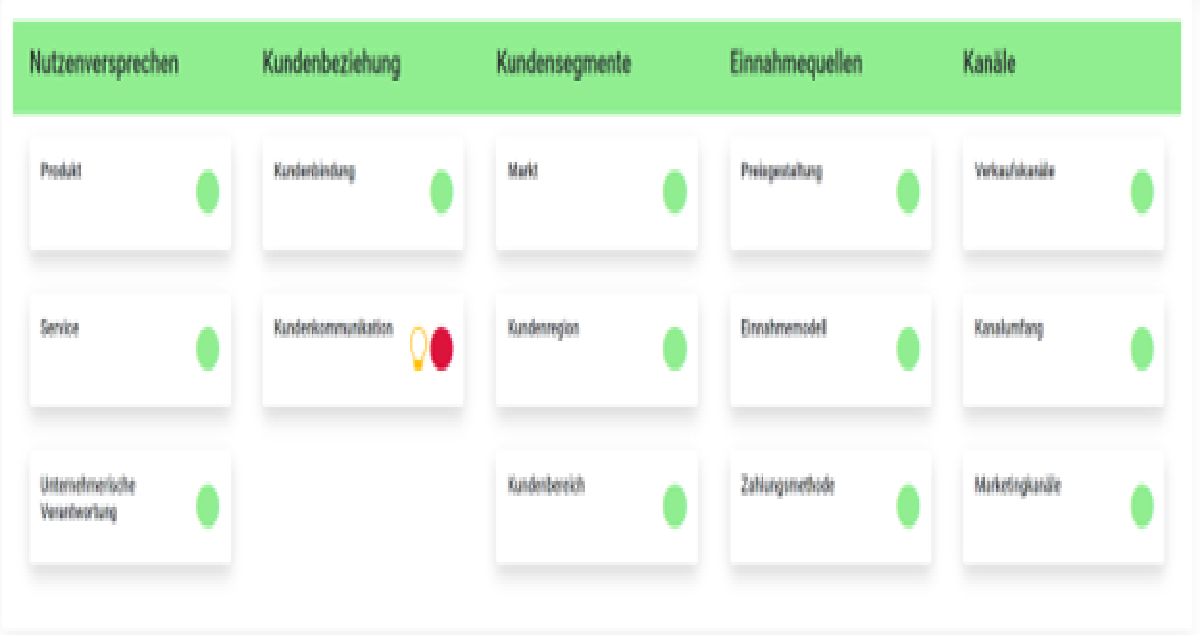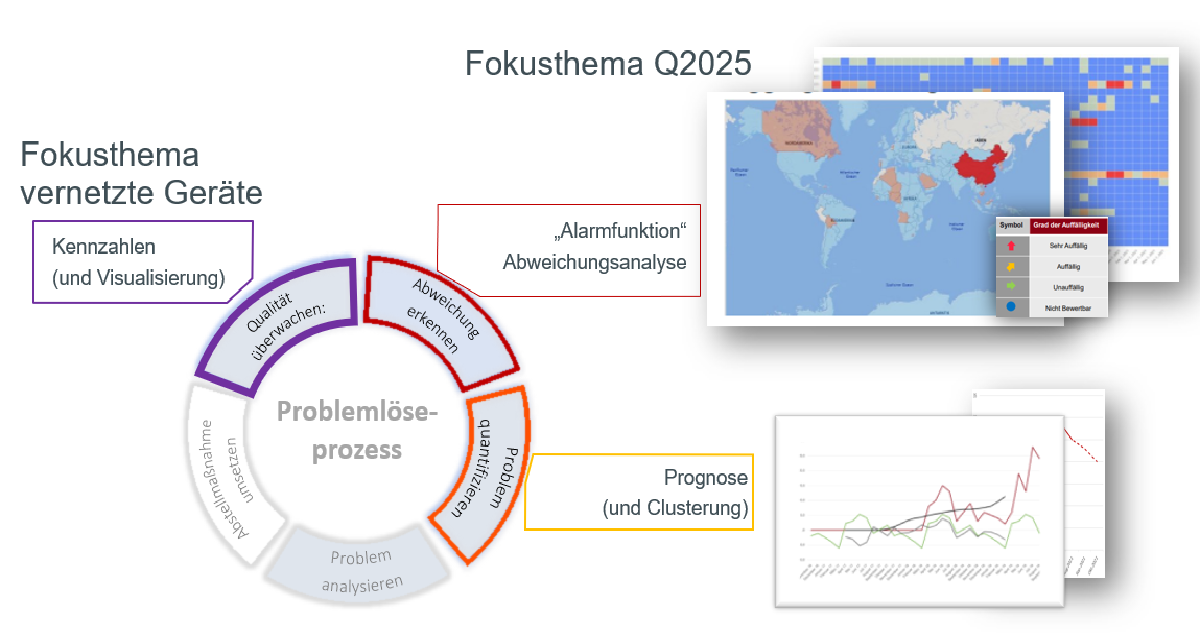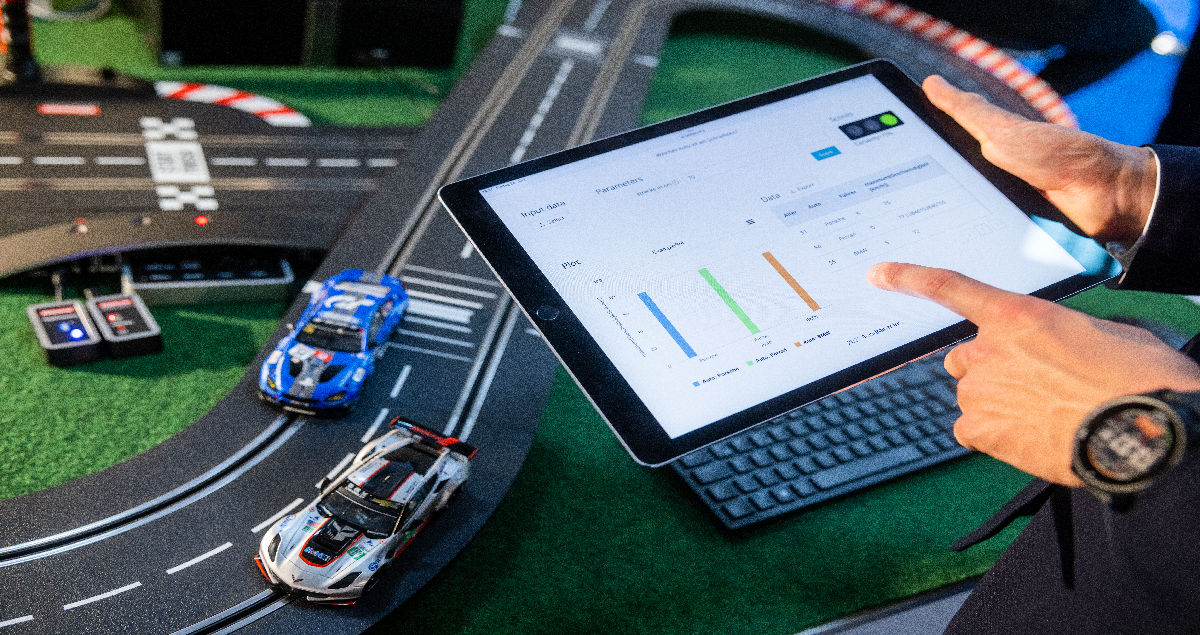Second work report from the research area “Competences and recommendations for action”
In this research area, a transfer to concrete and measurable competence definitions and areas is focussed based on the identified requirement areas and necessary competences of the employees and corresponding measuring instruments are developed. From this, appropriate, situational and technology-based learning modules for industrial data analysis will be realised.
We are implementing the measurement instruments as well as the learning modules as a learning management system in an online supported work & learn platform. The infrastructure makes it possible to record and promote the necessary competences of the employees and to transfer them into practical concepts and recommendations for action.
The practical implementation takes place in close exchange with our partners in the AKKORD project as well as through feedback from the companies.
A contextual classification of the works in the reference toolkit
The research area “Competences and recommendations for action” is one of four main topics in the AKKORD research project. This news article offers a summary overview of reference toolkit as well as the four research areas. Further the launch publication of the research project points out more information.
The last work report from this research area “Competences and recommendations for action” locates the work in the overall project and shows concrete measures in the areas of competence recording, as well as its development, safeguarding and conceptual design. The article presents all envisaged development steps, which concentrate on competence diagnosis, situated and technology-based learning modules, the development of a knowledge service and the transfer into practical recommendations for action. The following graphic shows the known processing status of the AKKORD reference toolkit, with the result level highlighted in colour. This is where the Work & Learn platform is conceptually located.
This second work report describes the progress of the work for the development of a comprehensive and didactically sound Work & Learn platform. The following conceptual diagram shows the individual digital areas that we will develop later for our users, in close cooperation with our consortium partners. After registering on the free platform, the first step is to record the user data and carry out a competence and interest localisation, which is essential for a user-oriented provision of learning modules and services. On the subsequent main page, the platform participants can then select the information on data science topics that is relevant to them via the channel area, similar to the YouTube platform. This way, users stay up to date with the latest information through continuous updates. In the service area, users get a wide range of service offers, which present e.g. best practice use case implementations. These best practices show how companies have implemented their specific questions with the help of data science methods. This offer also focuses on so-called learning from examples. Further general information on this practice-oriented approach can be found here. This link offers further interesting insights into the world of lifelong learning in the workplace.
In addition to the practice-oriented implementation scenarios, the service area provides users the opportunity to create application-specific analysis modules with the data science software solutions of our project partner RapidMiner. With our other project partner, the Institute for Production Systems, we develop and provide an intuitive task dashboard and pre-configured analysis modules for particularly relevant. The assistance system helps to support the users in their data analysis processes. More information on the implementation of the analysis modules is available at the following link.
In addition to the above-mentioned content in the service area, users should also have the opportunity to find out about the individual project partners and their services. In this way, especially companies that are confronted with more complex data science tasks can obtain competent support from the products and services of our consortium partners. In addition to the above-mentioned functions in the service area, we implement further functions, including a service for the implementation of new collaboration and business models in the context of Data Science, which will be realised by the partners of DFKI and Neocosmo. Information on the current status is explained in more detail at the following link.
The next main area is the so-called learning area, which represents the central development and implementation area for us. The competence development of the relevant contents on the topic of data science takes place via different learning modules depending on the level of competence. The course of the competence development extends over the area marked in blue in the illustration. At the beginning, the user fills out a questionnaire for self-assessment with a detailed competence diagnosis. The results form the initial state for measuring the competence development. From those results, an individually adapted learning path is provided, which is used as a guide to optimally adapt the content to be acquired to the needs of the user. The learning path is based on the already developed role profiles and their practice-oriented requirements (see work report 1).
After the user has completed the various learning units of the learning path, another questionnaire is available for self-assessment of the competence development. In order to measure the real development of competences through the learning platform, the platform records and evaluates the user’s progress by a test module adapted to the specific learning content of the individual learning path. If the result of this test module is greater than 70%, the user receives a certificate verified by AKKORD at the end.
The actual competence development takes place based on suitable and didactically prepared learning modules, which explain and practically illustrate the different areas of data science. In order to meet the individual needs and knowledge levels of the users, the knowledge transfer is divided into a basic and an advanced course. The basic course, based on the KDD process, contains all the basic information for a conceptual understanding as an introduction to the topic of data science. We have already been working out the learning content for this, prepared it didactically and embedded it in the learning platform. With the help of texts, images, videos and sound recordings, we built up a comprehensive knowledge base for the participants in six lessons and six additional lessons, which demonstrate an application reference using practice-oriented examples.
As a direct follow-up to the basic knowledge, the advanced course, which is based on the industry-oriented model of CRISP-DM, builds up a deeper application-related understanding. The focus here is on the practical application and the various possible solutions to the problems arising in the subject of Data Science. We have already been conceptually developing the course through the concretisation of the relevant learning modules as well. Additionally we are creating the content currently.
In addition to the learning area, the community area offers a direct opportunity for exchange between users on current, practice-oriented or learning-related problems. Strengthening communication among platform participants is a central factor in increasing effectiveness. The following link gives more information on the benefits.
The last area of the platform is the news-area. It provides current contributions from research and practice on the topic of data science on an ongoing basis.
The various platform areas are not available to users in isolation, but are closely linked to one another in an exchange. The broad spectrum of offerings thus ensures optimal utilization of the working and learning potential in the context of data science.
Summary and outlook on the further goals of the project
The platform concept includes five main areas, with the learning area as the focus of continuous development. Competence assessment and diagnosis has been conceptually realised in the form of self-assessment questionnaires and test modules and will be embedded in the platform in the next step. The project partner Neocosmo is developing a suitable template for this implementation. In the area of competence development, all learning modules of the basic course are already available on the platform. We will optimize them further in the near future through internal and external evaluation processes. The next steps will also focus on the structure and design of the learning units of the application-oriented advanced course.
Further information and interim results will be published continuously on the AKKORD website and in the news articles.
Author und Contact Person:


